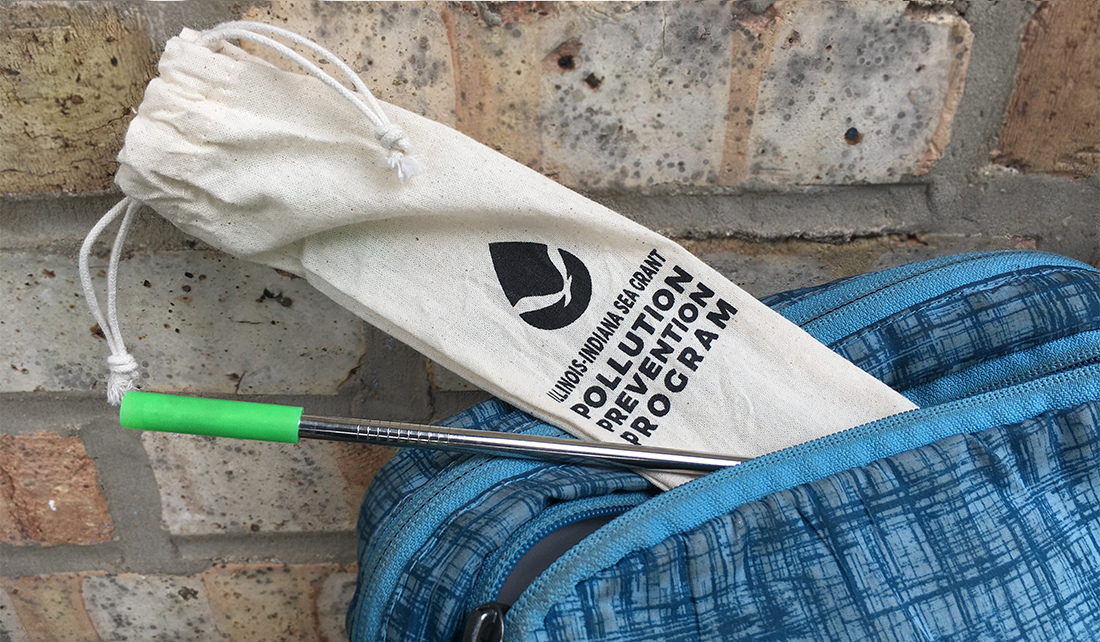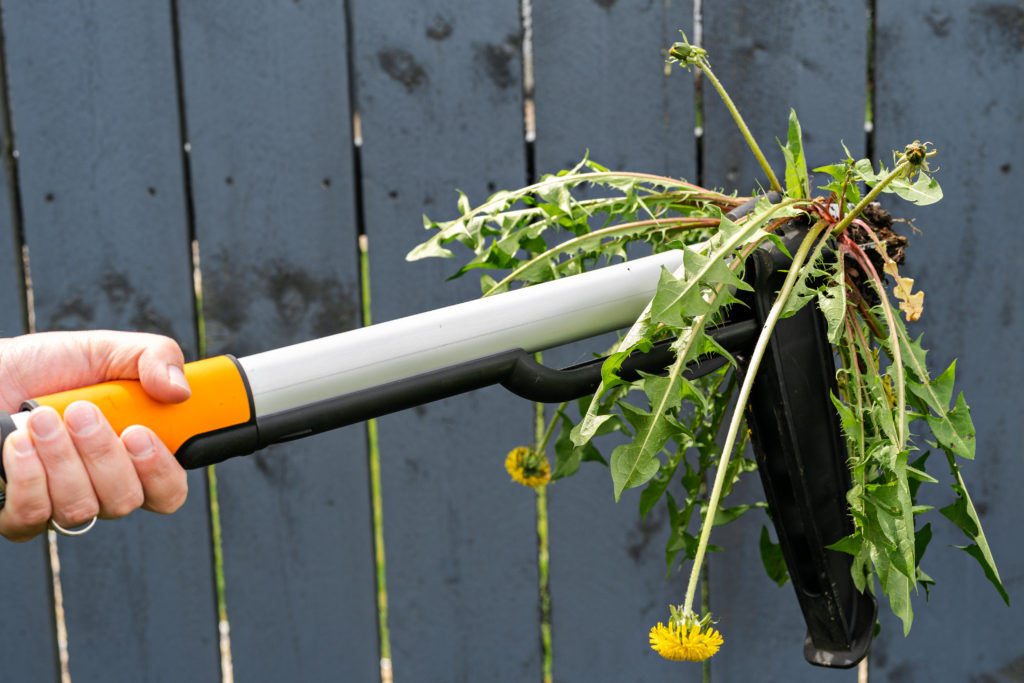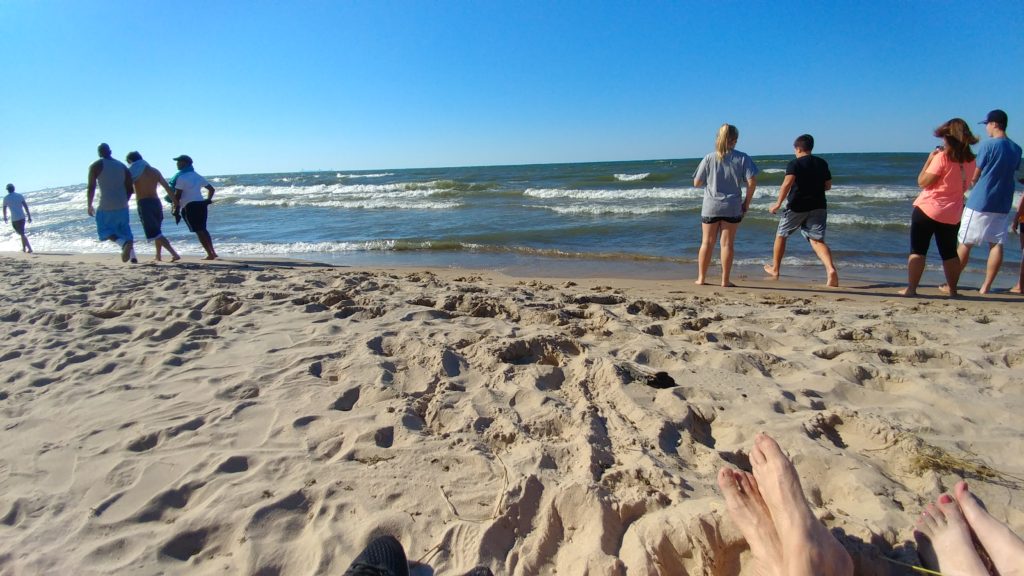
Let your love of the Great Lakes have an impact. Challenge yourself to try something new to prevent pollution in Lake Michigan and beyond. All 22 actions won’t work for everyone, but taking one action can make a difference.
Follow @GreatLakesP2 and #P2Tuesday on Twitter for more pollution prevention inspiration.
At home and work
- Properly dispose of unwanted medications to protect people, pets, and the environment. Find a collection site at unwantedmeds.org.
- Make your own cleaning products. By using less toxic ingredients you can reduce the threat of accidental exposure and pollution of the environment.
- Discover toxin-free household cleaning product alternatives with this publication from New Mexico State University Cooperative Extension Service. https://aces.nmsu.edu/pubs/_g/G315.pdf
- Turn off unused lights, appliances and equipment when they are not in use. Measure the impact of your energy use on the environment with several tools from the Environmental Protection Agency. https://www.epa.gov/energy/measure-impact-your-energy-use-environment?utm_source=agency-website&utm_medium=social&utm_campaign=&utm_term=&utm_content=
- Extend the life of equipment and products – repair or buy second-hand. Check out some helpful tips from the Illinois Sustainable Technology Center. https://blog.istc.illinois.edu/2018/09/18/p2week-day-2-reducing-your-impact-through-repair/
- Identify source reduction strategies. Evaluate the materials that produce waste at work. Try eliminating non-essentials, improving operating practices, purchasing more durable products, or replacing materials to reduce toxicity. The Indiana Department of Environmental Management has pollution prevention resources for Indiana business: https://www.in.gov/idem/ctap/pollution-prevention-p2-for-indiana-businesses/
In your yard
- Before applying fertilizer to your lawn, always consider soil test results, desired lawn quality, and maintenance preferences. Find more information from Lawn to Lake about how to fertilize appropriately and protect local water resources.
- Use integrated pest management to control pests with fewer pesticides while creating favorable growing conditions for your lawn. Midwest Grows Green provides toolkits, guides, and factsheets to help you reduce the need for pesticides.
- Mow smart to develop a deeper root system and reduce your dependence on irrigation and chemical fertilizers. Learn how to maximize your mowing practices on the Lawn to Lake website.
- Overwatering and misdirected watering practices result in wasted water and polluted runoff that may end up in nearby streams, rivers, lakes, and even groundwater. Lawn to Lake teaches you how to conserve water and control runoff on your property.
- Shrink your yard and plant natives, mowing less will reduce emissions. The Red Oak Rain Garden provides a number of native planting garden guides to get you started.
- Compost your food waste and by adding it to your garden and grass you can both mitigate greenhouse gas emissions and improve soil fertility.
- Pick-up pet waste to protect water quality. Pet waste can carry two types of pollutants into our waterways, nutrients and pathogens. Learn more about this from the Great Lakes Echo’s Scooping Poop Improves Water Quality.
- Salt keeps our sidewalks and streets safe but it can also pollute local waterways. Save money by sweeping up and reusing excess salt. Visit saltsmart.org for more tips.
At the store
- Reduce household hazardous waste by reading labels and choosing the least toxic products. Search for products that meet the EPA’s Safer Choice Standards.
- When you can, choose natural fiber materials like cotton, linen, wool, silk to prevent microplastic pollution. Learn more with Delaware SeaGrant’s microfiber factsheet.
- Reduce the need to harvest new materials by choosing reusable mugs, straws, and utensils when you can.
On the go
- Don’t idle your vehicle when you are not driving. Learn more with this factsheet from the U.S. Department of Energy.
- Choose a pollution-free mode of transportation when possible. Try walking or riding a bike for trips less than one mile. The EPA outlines what good could happen if we kept our cars parked for trips less than one mile.
- Prevent pollution by washing your car in a commercial car wash facility where wastewater can be filtered and recycled or properly disposed. The Illinois Environmental Protection Agency provides information about the requirements governing car wash wastewater and how these facilities can become more environmentally friendly and conserve water.
- Don’t litter. Wind, rain, streams, and rivers can deposit marine debris (trash) into our Great Lakes. The NOAA Marine Debris Program works to prevent marine debris from entering the Great Lake through education, outreach, and removal projects.
Sharing is caring
As we aim for progress not perfection, remember that individual actions matter. Share these pollution prevention tips with others and then get involved! IISG connects people with science to help protect southern Lake Michigan ecosystems and build resilient communities. Look for opportunities to get engaged.
Illinois-Indiana Sea Grant is a part of University of Illinois Extension and Purdue Extension.
Contacts: Janice Milanovich, Sarah Zack






